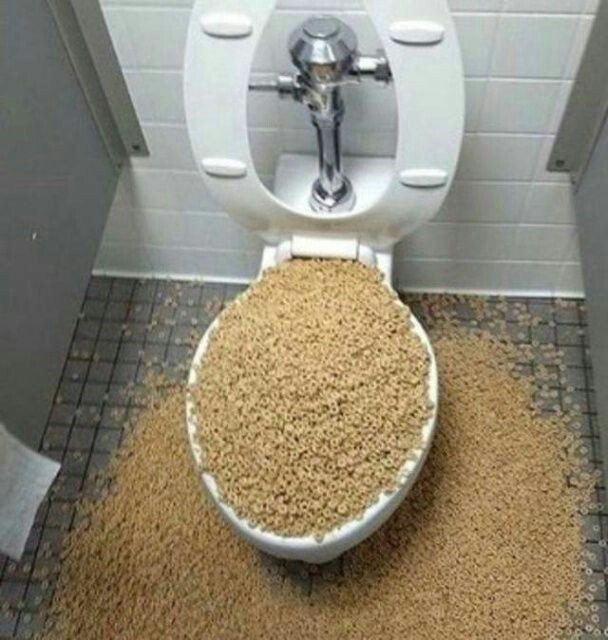Can One to Dispose of Food in the Toilet?
Can One to Dispose of Food in the Toilet?
Blog Article
Just about every person may have their unique rationale on the subject of Think Twice Before Flushing Food Down Your Toilet.

Introduction
Lots of people are frequently faced with the issue of what to do with food waste, specifically when it involves leftovers or scraps. One common inquiry that occurs is whether it's fine to purge food down the bathroom. In this article, we'll look into the reasons that individuals might take into consideration purging food, the consequences of doing so, and alternative approaches for appropriate disposal.
Reasons that people could take into consideration flushing food
Lack of awareness
Some people might not know the possible harm caused by purging food down the bathroom. They may incorrectly believe that it's a harmless method.
Convenience
Flushing food down the commode might appear like a quick and easy remedy to getting rid of unwanted scraps, specifically when there's no neighboring trash bin offered.
Negligence
In many cases, people might simply select to flush food out of large laziness, without considering the consequences of their activities.
Repercussions of flushing food down the toilet
Environmental impact
Food waste that ends up in waterways can add to contamination and harm aquatic ecosystems. Additionally, the water used to flush food can strain water resources.
Pipes issues
Flushing food can lead to stopped up pipelines and drains pipes, causing pricey plumbing repairs and aggravations.
Types of food that must not be purged
Coarse foods
Foods with coarse structures such as celery or corn husks can obtain entangled in pipes and trigger blockages.
Starchy foods
Starchy foods like pasta and rice can take in water and swell, bring about clogs in pipes.
Oils and fats
Greasy foods like bacon or cooking oils ought to never be flushed down the bathroom as they can solidify and trigger blockages.
Appropriate disposal approaches for food waste
Using a waste disposal unit
For homes geared up with waste disposal unit, food scraps can be ground up and purged with the plumbing system. Nevertheless, not all foods are suitable for disposal in this way.
Recycling
Certain food packaging products can be reused, reducing waste and decreasing environmental impact.
Composting
Composting is an environment-friendly method to dispose of food waste. Organic products can be composted and made use of to enrich dirt for gardening.
The significance of appropriate waste monitoring
Decreasing environmental harm
Correct waste administration practices, such as composting and recycling, assistance minimize pollution and preserve natural deposits for future generations.
Protecting pipes systems
By avoiding the method of flushing food down the commode, home owners can prevent pricey plumbing repair services and maintain the honesty of their pipes systems.
Verdict
Finally, while it may be tempting to purge food down the bathroom for benefit, it is essential to recognize the possible effects of this activity. By embracing correct waste management methods and dealing with food waste sensibly, people can add to healthier pipes systems and a cleaner atmosphere for all.
FLUSH FOOD DOWN THE TOILET?
FLUSHING FOOD CAN CAUSE BLOCKED DRAINS IN YOUR HOME
All of the plumbing fixtures in your home are connected to the same sewer pipe outside of your home. This outdoor sewer pipe is responsible for transporting all the wastewater from your home to the Council sewer mains. Even small pieces of food that go down the kitchen sink can cause problems for your sewer. It should therefore be obvious that flushing larger bits of food, such as meat, risks a clog in either the toilet itself or the sewer pipes. Flushing greasy food is even more problematic because oil coagulates when it cools, coating the interior lining of your pipes.
THE TOILET IS NOT A BIN
Food isn’t the only thing that people shouldn’t be flushing down the toilet. People use the toilet to dispose of all kinds of things such as tampons, makeup wipes, dental floss, kitty litter and even underwear. Water goes to great lengths to educate residents about the high costs and stress placed on wastewater treatment systems simply from people flushing the wrong stuff down the toilet. It costs taxpayers millions of dollars each year, and homeowners thousands in blocked drain repairs.
FLUSHING FOOD IS A WASTE OF WATER
Flushing food is a waste of our most precious resource - water. In June this year Level 1 water restrictions were introduced to protect water supply from drought conditions. Much of New South Wales continues to be affected by prolonged drought with recent figures revealing up to 97 per cent of the state remains in drought. Depending on whether you have a single or dual flush toilet, every single flush uses between five and 11 litres of water. In the current climate this is a huge amount of water to be wasting on flushing food that should be placed in the bin (or better yet, the compost).
https://www.jabplumbingsolutions.com.au/blog/can-you-flush-food-down-the-toilet

I'm very occupied with Is it safe to flush food (especially rice) down the toilet? and I'm hoping you enjoyed reading the entire blog entry. Sharing is caring. Helping others is fun. Thank you for taking the time to read it.
Click Here Report this page